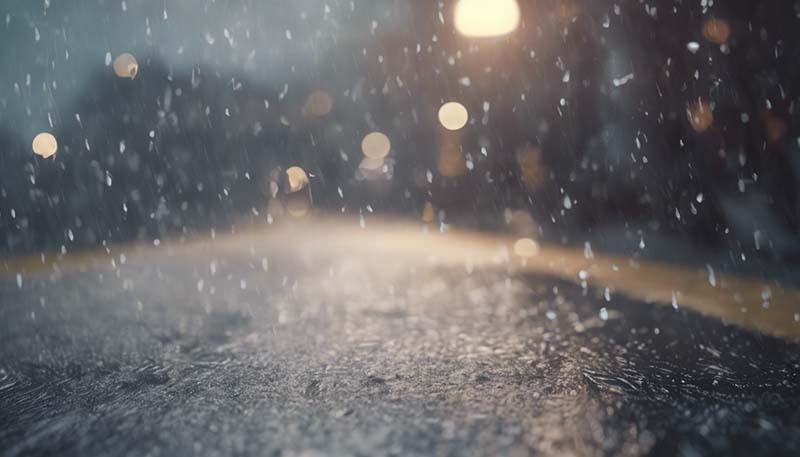Creating Realistic Weather Effects with Game Design Software
Introduction:
Weather effects play a crucial role in creating an immersive gaming experience. They can affect the gameplay, player\'s mood, and overall atmosphere of the game. Game design software provides various tools and features to create realistic weather effects. In this article, we will explore different techniques and methods to create realistic weather effects using game design software.
1. Understanding Weather Phenomena:
Before diving into the technical aspects, it\'s essential to understand the different weather phenomena and their characteristics. Some common weather effects include rain, snow, fog, thunderstorms, and tornadoes. Each weather effect has unique visual and audio elements that need to be replicated in the game.
2. Using Particle Systems:
Particle systems are a popular technique for creating weather effects. They generate numerous small particles that simulate rain, snow, or other weather elements. Game design software like Unity and Unreal Engine provides built-in particle systems that can be customized to create realistic weather effects.
3. Creating Rain Effects:
To create rain effects, you can use a combination of particle systems and shaders. Start by creating a particle system that emits numerous small, transparent quads to simulate raindrops. Adjust the particle system\'s settings, such as emission rate, size, and velocity, to achieve the desired rain intensity.
Advertisement
Next, create a custom shader to give the raindrops a realistic appearance. The shader should simulate the interaction of light with water droplets, creating a wet and shiny look. Additionally, you can add a noise texture to the shader to create a more natural and random appearance.
4. Creating Snow Effects:
Creating snow effects is similar to creating rain effects. However, you need to make some adjustments to the particle system and shader. Instead of using transparent quads, use white or light blue particles to simulate snowflakes.
Adjust the particle system\'s settings to create larger and slower-moving particles to mimic the falling snow. You can also add a wind force to the particle system to simulate the snow drifting in the wind.
For the shader, you can use a similar approach as the rain effect. However, you need to adjust the shader\'s properties to simulate the appearance of snow. You can use a white or light blue color for the base color and add a subtle noise texture to create a more natural look.
5. Creating Fog Effects:
Fog effects can create a mysterious and eerie atmosphere in the game. To create fog effects, you can use a combination of volumetric shaders and distance-based fog.
Start by creating a volumetric shader that simulates the scattering of light in the fog. The shader should use a combination of noise textures and gradient functions to create a realistic fog appearance.
Next, implement distance-based fog in the game engine. This technique uses a fog color and density parameter that decrease the further the object is from the camera. By combining volumetric shaders and distance-based fog, you can create a realistic and immersive fog effect.
6. Creating Thunderstorm Effects:
Thunderstorm effects can create a dramatic and intense atmosphere in the game. To create thunderstorm effects, you can use a combination of particle systems, shaders, and audio effects.
For the visual effects, create a particle system that emits numerous small, bright particles to simulate lightning strikes. Use a custom shader to give the lightning a realistic appearance. The shader should simulate the interaction of light with the surrounding environment, creating a bright and intense look.

For the audio effects, use a combination of thunder sounds and rain sounds to create a realistic thunderstorm atmosphere. You can use a sound engine or a third-party audio middleware to control the playback and synchronization of the audio effects.
7. Creating Tornado Effects:
Tornado effects can create a thrilling and action-packed experience in the game. To create tornado effects, you can use a combination of particle systems, shaders, and geometry.
Start by creating a particle system that emits numerous small, fast-moving particles to simulate the swirling wind and debris. Use a custom shader to give the tornado a realistic appearance. The shader should simulate the interaction of light with the swirling particles, creating a dynamic and intense look.
Next, create a geometry model of the tornado using a combination of cylinders and tori. The geometry should have a smooth and curved shape to mimic the appearance of a real tornado.
Finally, animate the geometry model to simulate the spinning motion of the tornado. You can use a combination of rotation and scaling transformations to achieve a realistic animation.
Conclusion:
Creating realistic weather effects with game design software requires a combination of particle systems, shaders, geometry, and audio effects. By understanding the characteristics of different weather phenomena and using the right techniques, you can create immersive and engaging weather effects that enhance the gaming experience.
Remember to test and iterate on your weather effects to achieve the desired level of realism and performance. With practice and experimentation, you can create stunning and realistic weather effects that transport players to different worlds and environments.
Leave a Reply